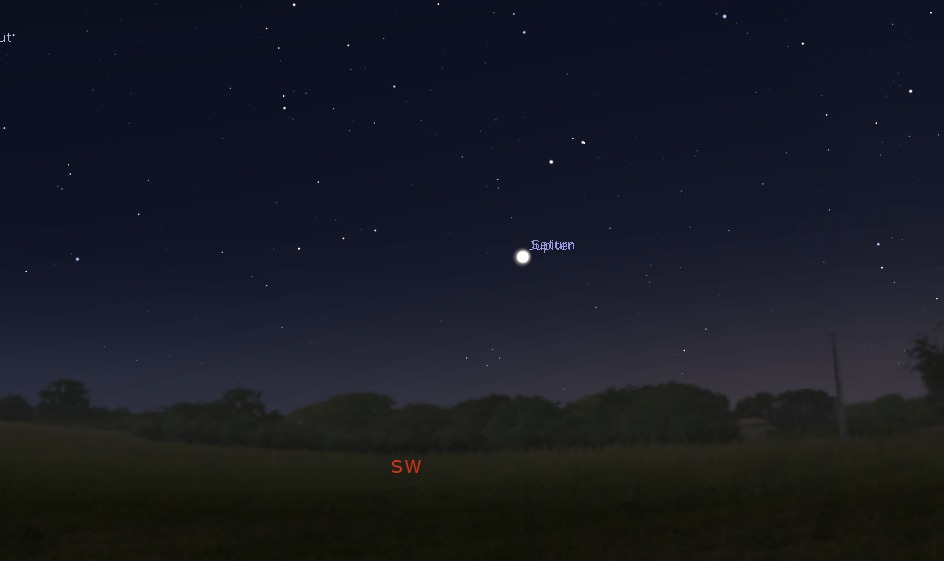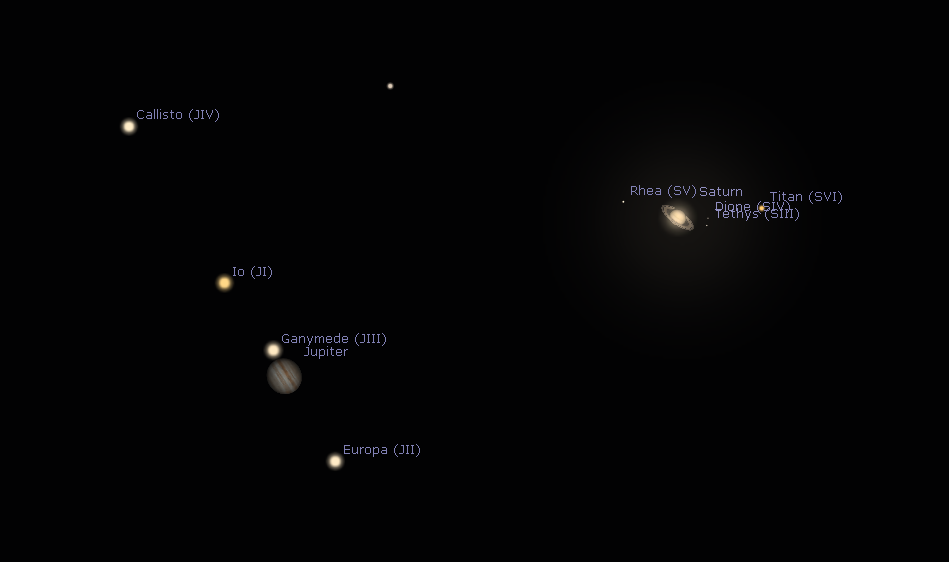Jupiter/Saturn conjunction: Celebrate a planetary pile-up with us on the longest night of the year, December 21, 2020
December 16, 2020
By Amy Sayle
A slow-motion planetary pile-up is happening—and you can see it, weather permitting. For months now, Jupiter and Saturn have been closing in on each other in our night sky in an apparent massive violation of social distancing.
By December 21, 2020, which happens to be the winter solstice and the longest night of the year for the northern hemisphere, these two planets will be just 1/10th of a degree apart, or 1/5th of the apparent width of the full moon. You’ll be able to easily cover both planets with the tip of your pinky finger when you stretch out your arm.
Although Jupiter laps Saturn in the sky about every 20 years, this is their closest conjunction since July 16, 1623, and it’s the closest one that’s readily observable since 1226.
Of course, in reality these two planets are giving each other space. Lots of space. They’re hundreds of millions of miles apart from each other, but they look close together because they happen to be lying in virtually the same line of sight from Earth’s point of view.
Tips for viewing this conjunction:
1. All you need are your eyes and a clear sky.
Don’t worry if you live in a light-polluted location. These planets are bright, especially Jupiter. You can see them using just your unaided eyes.


If you happen to own a telescope, though, definitely pull it out. Jupiter and Saturn are (in my opinion) the two best planets to view through a telescope, and by the 21st, you can expect to see them both in the same field of view in the eyepiece. Look for four of Jupiter’s moons and for Saturn’s rings.
2. Start looking each clear evening.
Don’t wait until December 21! Part of the fun is watching Jupiter and Saturn close in on each other bit by bit. Also, they’re setting earlier each evening, which means it’s only getting more challenging to find a view that won’t be blocked by buildings or trees.
If you have clear skies on December 16 and 17, 2020, you’ll see the waxing crescent Moon appear near the planets. It will be a striking sight. Even though it might not look like it, the Moon is also socially distancing from Jupiter and Saturn in a big way. The Moon is well over a thousand times closer to Earth than these planets are.
3. Look between 30-60 minutes after sunset.
This is an early-bedtime-friendly and curfew-friendly event. This week, I easily found Jupiter against the background of the twilight sky just 30 minutes after sunset, and then was able to spot dimmer Saturn very nearby.
If you live in central North Carolina, your sunsets at this time of year are just after 5 p.m. Try looking around 5:30-6 p.m. Don’t wait too much later than that, though, because as Earth continues to rotate, the planets will sink lower and then set below the horizon. Find your sunset time here.
As it gets closer to Dec. 21st and the planets get closer to each other, don’t count on being able to easily resolve them as two separate points of light. Binoculars or a telescope will help.
4. Look to the southwest.
That’s in roughly the same direction that the Sun will have set. Jupiter and Saturn will be fairly low in the sky, so you may need to walk around your neighborhood to get a view that’s not blocked by houses or trees. Treat it like a treasure hunt. Where will you need to walk to find the planetary conjunction?
Along the way, you may spot another planet, Mars, currently shining high in the southeast soon after sunset. Mars will be bright, will be much higher above the horizon than Jupiter and Saturn, and will have a noticeably reddish or orangey tint.
5. Join us for a free virtual skywatching event.
Morehead Planetarium and Science Center is teaming up with the Raleigh Astronomy Club (RAC) to offer a free virtual skywatching event for the conjunction of Jupiter and Saturn on the 21st.
RAC members and NASA/JPL Solar System Ambassadors Mike Keefe and Doug Lively will share live views from their telescopes of Jupiter and four of its moons, and Saturn and its spectacular rings.
We’ll also take a look at Mars and the Moon, and you’ll have a chance to ask questions. Join us in observing and learning about several of our solar system neighbors. Appropriate for all ages.
This virtual event will be from 6 to 7 p.m. on Monday, December 21, 2020, weather permitting. The cloud/rain date will be Tuesday, December 22, from 6 to 7 p.m. You can sign up for free online by using the registration button below. Hope to see you online!
